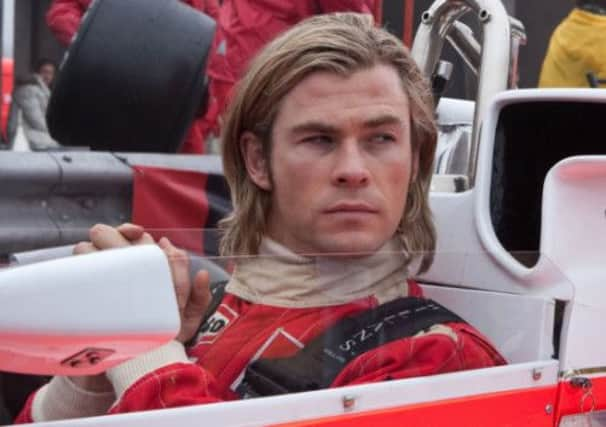Review: Rush (15)


In Apollo 13 it was the amazing story of three men cheating death in space. In Rush it is the earth-bound drama of the bitter rivalry between James Hunt and Niki Lauda during the glory days of 1970s Formula One racing.
No-one can forget the catastrophic crash and fire that left Lauda battling for his life. Yet, just a few months later he was back on the track, head swathed in bandages, his burns and scars a testament to his courage and will to win.
Advertisement
Hide AdAdvertisement
Hide AdThat, then, is at the heart of this remarkable double biopic: the need for speed and the desire to reach the chequered flag before anyone else. And in Chris Hemsworth and, particularly, Daniel Brühl, Howard has played an ace. James Hunt (Hemsworth for once given a chance to play a real character) is a rich boy. Niki Lauda (Brühl, superb) is a self-made success who takes out a loan to buy into a team and follow his dream.
The crux of Howard’s film – and Peter Morgan’s screenplay – is in detailing the differences between these two men. Lauda is depicted as a disciplined good boy: focused, standoffish and isolated. Hunt is exactly the opposite. But both are self-absorbed egotists. “Happiness is the enemy. It weakens you,” remarks Lauda at one point. And it is that intensity of vision – to win above all else – that makes Rush such a thrill ride.The scenes on the track are delivered with a sense of pulse-pounding reality. And in a movie where there is a real risk that the cars might become the stars it is a testament to Hemsworth and Brühl that Hunt and Lauda come off so well. Hemsworth has less to work with than Brühl. Hunt emerges as a dilettante, eager to enjoy the wine, the ladies and the acclaim. Brühl’s Lauda is unconcerned with issues of popularity. His mantra is to be the best. The scene of Lauda’s near-fatal crash is handled with a mix of rubber-necking voyeurism and heart-in-the-mouth realism. Even now, 40 years on, it packs a punch that leaves you gasping.